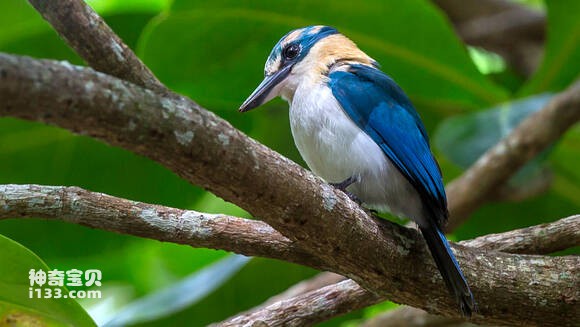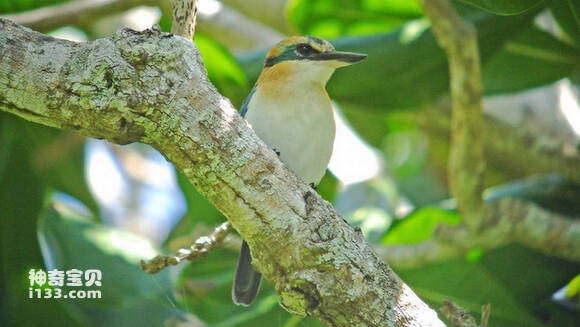Todirhamphus ruficollari
IUCN
LCBasic Information
Scientific classification
- name:Todirhamphus ruficollari
- Scientific Name:Todirhamphus ruficollari,Halcyon ruficollaris,Mewing kingfisher
- Outline:Climbing birds
- Family:
Vital signs
- length:No textual research information is available
- Weight:No textual research information is available
- lifetime:No textual research information is available
Feature
It is a bird unique to Mangayat, the largest island in the Cook Islands
Distribution and Habitat
It is found in New Zealand's Cook Islands.
It usually inhabits dense forests and riverbanks near water.
Appearance
Blue-green plumage with narrow yellow-orange bands on the head, black eyes, yellow eyebrows, and an orange collar that extends further throughout the chest. The underbody is white, while the powerful, black beak of the bird is straight and dagger-shaped, capable of perfectly handling its own prey.
The mouth is thick and long like a chisel, the base is wider, the mouth peak is straight, the peak ridge is round, there is no nasal groove on both sides; Wing circle, the first primary feather is equal or slightly shorter than the seventh primary feather, and the second, third, and fourth are nearly equal in length; Primary feather base with white spots; The tail is round.
Details
Cook Islands emerald scientific name Todirhamphus ruficollari, Halcyon ruficollaris, foreign name Mewing kingfisher, no subspecies.

One characteristic of the bird song of the Cook Islands emerald is "tanga-eeeoo", repeated three to five times, hence its traditional name Tanga'eo. The Cook Islands emerald is sometimes considered a subspecies of the Bora emerald (Todirhamphus tutus).
Cook Island jadeites are usually hunted alone or in pairs. Like most forest kingfishers, they are completely carnivorous. Often searching for prey in leaves or dirt. The main diet is invertebrates such as crickets, spiders, scorpions, and snails. It also eats small vertebrates such as small fish, small snakes and lizards.
C763ffee76c6a7ef4552fb53f0faaf51f2de66c6_ nine ray image converter. JPG

Cook Island emerald nests on earth cliffs or river levees, tunnelled caves dug with mouths for nests, 60 cm deep, 20 cm wide, 10 cm high, oval. These caves are generally bare of bedding. The eggs are laid directly on the nest ground. Oval, pure white, about 29.4×26.2 mm in size.
Listed in the International Union for Conservation of Nature (IUCN) ver 3.1:2008 Red List of Birds.
Protect wild animals and eliminate wild meat.
Maintaining ecological balance is everyone's responsibility!








